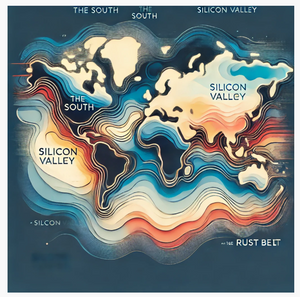Absolute Location (AP Human Geography): Understanding Its Importance and Applications
What is Absolute Location in AP Human Geography?
Absolute location refers to the precise geographic position of a place, typically expressed using latitude and longitude coordinates or a fixed address. Unlike relative location, which describes a place in relation to other landmarks, absolute location provides an unchanging and exact reference point.
For example:
-
The absolute location of the Eiffel Tower is 48.8584° N, 2.2945° E.
-
The absolute location of the White House is 1600 Pennsylvania Avenue NW, Washington, DC 20500, USA.
Absolute Location vs. Relative Location
Absolute Location:
-
Uses latitude and longitude.
-
Provides an exact, unchanging location.
-
Found on GPS systems, maps, and navigation tools.
Relative Location:
-
Describes a location in relation to other places (e.g., "next to the river").
-
Changes depending on perspective.
-
Used in everyday navigation and social contexts.
For example:
-
Absolute Location: The Amazon Rainforest spans 3° S, 60° W.
-
Relative Location: The Amazon Rainforest is located in South America, stretching across Brazil, Peru, and Colombia.
Examples of Absolute Location in AP Human Geography
Absolute location plays a fundamental role in geography. Here are some key examples:
-
GPS & Navigation:
-
Every point on Earth can be identified using absolute coordinates, which is essential for Google Maps, Waze, and military navigation.
-
-
Cartography (Map Making):
-
Geographers use absolute location to create accurate maps and define borders.
-
-
Disaster Management:
-
Scientists track hurricanes, earthquakes, and wildfires using absolute location to issue alerts and save lives.
-
-
Historical & Cultural Sites:
-
UNESCO lists world heritage sites based on their exact coordinates, ensuring their preservation.
-
-
Trade & Commerce:
-
Shipping companies use absolute location to chart trade routes and optimize logistics.
-
What is Absolute Space in Human Geography?
Absolute space refers to a fixed, measurable area, unlike perceived space, which can change depending on human experience. It is essential for:
-
Urban planning (designing roads and buildings)
-
Territorial boundaries (establishing country borders)
-
Scientific mapping (defining landforms and bodies of water)
Common Questions About Absolute Location
1. What is the definition of absolute location (Quizlet)?
-
Absolute location is the precise geographic location of a place, often defined by latitude and longitude.
2. What is absolute distance in AP Human Geography?
-
Absolute distance measures the fixed physical space between two locations, usually in miles or kilometers.
3. What is an example of absolute location?
-
The absolute location of the Statue of Liberty is 40.6892° N, 74.0445° W.
4. How is absolute location different from relative location?
-
Absolute location never changes, while relative location depends on surrounding landmarks.
5. How is absolute location used in everyday life?
-
Absolute location is crucial for emergency response, navigation, real estate, and weather forecasting.
Conclusion: Why is Absolute Location Important?
Absolute location is one of the most important concepts in AP Human Geography. It allows us to pinpoint exact locations, making navigation, mapping, and geographic analysis possible. From historical sites to modern GPS systems, absolute location is a fundamental part of how we understand and interact with the world.




